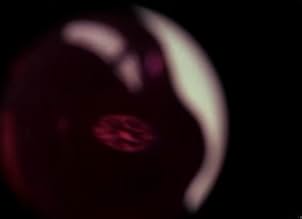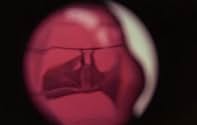En voyageant à bord du Transsibérien Express, un anthropologue et son rival doivent contenir la menace posée par la cargaison: un singe préhistorique qui est l'hôte d'une forme de vie qui ab... Tout lireEn voyageant à bord du Transsibérien Express, un anthropologue et son rival doivent contenir la menace posée par la cargaison: un singe préhistorique qui est l'hôte d'une forme de vie qui absorbe l'esprit des passagers et de l'équipage.En voyageant à bord du Transsibérien Express, un anthropologue et son rival doivent contenir la menace posée par la cargaison: un singe préhistorique qui est l'hôte d'une forme de vie qui absorbe l'esprit des passagers et de l'équipage.
- Réalisation
- Scénario
- Casting principal
- Récompenses
- 1 victoire et 1 nomination au total
- Prof. Sir Alexander Saxton
- (as Cristopher Lee)
- Yevtuchenko
- (as Angel del Pozo)
- Maletero - Baggage Man
- (as Victor Israel)
- Natasha
- (as Helga Line)
- Konev - Conductor
- (as Jose Jaspe)
- Creature
- (as Juan Olaguibel)
- Russian Guard
- (as Jose Canalejas)
- Vorkin
- (as Jose Marco)
Avis à la une
Now that I'm an adult, with plenty of gory movies under my belt, I've largely gotten over my childhood dread of this odd little film. And yet, "Horror Express" still packs a scary punch for me during its best scenes. The train setting is both romantic and claustrophobic, and the monster is effective in both its human and creature forms.
The script blends science fiction and horror to interesting effect, suggesting that the monster is some kind of "unholy" alien. I've seen a lot of horror/sci-fi hybrid stories on TV (in Kolchak, The X-Files, Doctor Who, etc.), but not too many in the movies - so "Horror Express" is fairly unique in its blending of genres for the silver screen.
This movie is also noteworthy for its first-rate genre cast. Of course, horror icons Peter Cushing and Christopher Lee are on hand (unusually, Lee has more dialog than Cushing - the reverse is usually true). But the really noteworthy piece of casting is Telly "Kojak" Savalas as a loud, bossy Cossack captain. To be honest, I think his glorified cameo is a little outrageous, and temporarily threatens to derail the film (pun entirely intended, I'm afraid), but ultimately he doesn't distract too much from the other, better-established characters.
Of course this is no masterpiece, but fans of what I call "good little horror films" should enjoy it immensely. It's got good ideas, scares, gore, eye candy, and cool actors - what more do you need, right?
I really love old-horror movies with both Peter Cushing and Christopher Lee in it. In this movie they are better than ever together. Their acting is superb and so is the rest of the cast even though it is a bit strange that almost all of the Russians are played by Spanish people. Telly Savalas also shows up in a fun role. Savalas is probably best known for portraying Ernst Stavro Blofeld in the James Bond movie "On Her Majesty's Secret Service" but he also played in classics like: "Cape Fear" (1962), "Kelly's Heroes", "Capricorn One" and "The Dirty Dozen". It's wonderful to see such fine acting in one movie because normally mainly it are just only Cushing and Lee who are the only good actors in a movie like this.
Also this movie is actually scary and gory and it has a really good atmosphere. It starts like some kind of monster movie like "Creature From the Black Lagoon" but the second halve of the movie is more like a Zombie movie like "Lifeforce" (which is an underrated horror classic in my opinion with a great soundtrack). A combination that worked really well for me.
The story stays simple and of course ridicules but it still is better than 90% of the other movies from the same genre and it actually goes deeper in trying to explain some of the things.
In my opinion a real horror classic!
8/10
http://bobafett1138.blogspot.com/
Cushing and Lee are at their best, playing off each other like the twin horror icons they are! The story line is intriguing and quite original, providing an atmosphere of creeping dread to go along with its beastie!
EXTRA POINTS: For the Rasputin-like Father Pujardov (Alberto del Mendoza), who adds a heavy dose of hyper-religious blather and outright madness to the proceedings. Also, Telly Savalas makes a perfectly intimidating Cossack!
A unique and very influential horror film...
In 1906, Professor Sir Alexander Saxton( Christopher Lee, a renowned British anthropologist, is returning to Europe by the Trans-Siberian Express from Shanghai to Moscow. With him is a crate containing the frozen remains of a primitive humanoid creature that he discovered in a cave in Manchuria. Along for the ride is Doctor Wells, who doesn't get along with Saxton, but when the creature escapes from the box, and with the bodies piling up with their eyes turned white they have to act fast to stop it - but already the creature has found a new host ...
Not your typical monster on the spree romp, Horror express is sprinkled with some intelligence. The monster is curious about the earth. A brisk direction and elevated tension keeps this film simmering, but it's Cushing and Lee that add high credentials to this chiller. Telly Savalas has a small cameo. Silvia Tortosa and Helga Line provide eye candy.
Le saviez-vous
- AnecdotesPeter Cushing arrived in Spain for filming and immediately told producer Bernard Gordon that he could not do the picture, as he felt it was too soon after his wife's death. Christopher Lee convinced Cushing to stay on by reminiscing with him about the previous movies they'd worked on together, much to the relief of Gordon.
- GaffesThe opening credits say the movie takes place in Peking, but all the railroad station sets have signs that say "Shanghai" in Chinese. The cast's dialogue also refers to their train trip starting in Shanghai.
- Citations
Dr. Wells: [entering Saxon and Mirov's compartment with a shotgun] Thought this might come in handy.
Inspector Mirov: [sarcastic] Oh, good idea. Two of you together - that's fine. But what if one of you is the monster?
Dr. Wells: Monster? We're British, you know!
- Crédits fousIn the opening credits of the English-language VHS version, Christopher Lee's name is misspelled as "Cristopher".
- Versions alternativesDVD by Image Entertainment is 88 minutes long, the original theatrical version. DVD by Simitar Video is 85 minutes long, the television version.
- ConnexionsEdited into Time Tracers (1997)
Meilleurs choix
Détails
- Date de sortie
- Pays d’origine
- Langues
- Aussi connu sous le nom de
- Pánico en el Transiberiano
- Lieux de tournage
- Sociétés de production
- Voir plus de crédits d'entreprise sur IMDbPro
Box-office
- Budget
- 300 000 $US (estimé)




































